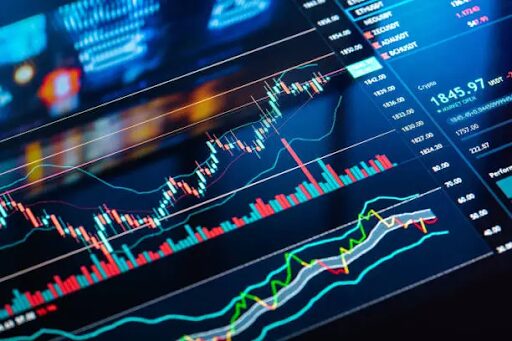It’s that time again.
Time for the annual BRICS+ Leaders Summit. The BRICS have hundreds of meetings over the course of the year on every topic from sports to women’s issues to agriculture. But there is only one Leaders Summit. That’s when the heads of state of the members convene to discuss policy issues and to make announcements of major importance.
For those new to BRICS, it’s an acronym from the names of the founding members of Brazil, Russia, India and China who first met in 2009. That gave us BRICs. South Africa joined in 2010 and the group became BRICS. Iran, Ethiopia, UAE and Egypt joined in 2024 and Indonesia joined in 2025. I refer to this expanded group of ten as BRICS+.
In 2024, a partner category was established for countries that are not full members of BRICS but are invited to join the Leaders’ and Foreign Ministers’ Summits. The current partners are Belarus, Bolivia, Kazakhstan, Cuba, Malaysia, Nigeria, Thailand, Uganda, and Uzbekistan. Some of these partners may become full members in the near future.
In addition, there is an even longer waiting list of potential future members including important economies such as Turkey, Algeria, and Saudi Arabia. Regardless of the specific dates on which particular countries join BRICS or become partner members, the continued expansion of the group seems assured.
Not A Motley Crew
While the Leaders’ Summit is an annual event, it does not occur at the same time each year. The exact date depends on the schedules of the leaders themselves as well as seasonal conditions in the host country. The overall leadership of BRICS+ is a rotating presidency among Brazil, Russia, India, China and South Africa. Last year, the summit was held in Russia in October with President Putin as host.
This year Brazil has the rotating presidency and the summit will be in Rio de Janeiro on July 6 – 7, 2025. Brazilian President Luiz Inácio Lula da Silva is host. All of the founding BRICS leaders are expected to attend including Lula da Silva (Brazil), Vladimir Putin (Russia), Narendra Modi (India), Xi Jinping (China) and Cyril Ramaphosa (South Africa), along with many others.
A brief comparison of the combined resources of the first five BRICS members with the resources of the G7 (U.S., UK, Germany, Italy, France, Japan and Canada) is instructive.
In terms of population, the BRICS have 3.3 billion people compared to 0.8 billion in the G7. The total land area is 39.7 km2 for BRICS versus 21.7kn2 for the G7.
Real annual growth in GDP is about 5% for the BRICS versus 2% in the G7. Nominal GDP for the G7 leads the BRICS by $45.3 trillion (43.7% of global output) compared to $26.7 trillion (28.7% of global output). But when purchasing power parity accounting is used, the BRICS lead G7 $51.6 trillion to $48 trillion.
The point is not that the BRICS are overtaking the G7 across the board – they’re not. The point is that the BRICS are a powerful group demographically and economically and not a motley collection of what were once called third-world countries.
Prepared To Go Their Own Way
The BRICS do far more than gather for summits. They have spent the last sixteen years carefully and methodically building a parallel version of the original Bretton Woods institutions (1944) to suit their own purposes.
The BRICS New Development Bank based in Shanghai functions much like the World Bank as a development lender. The BRICS Contingent Reserve Arrangement (CRA) functions much like the IMF as a swing lender to members experiencing temporary liquidity or foreign exchange distress. The new BRICS payment system (BRICS Pay) functions as a financial payment, settlement and clearance system to displace Western institutions such as SWIFT and Euroclear.
Simply stated, the BRICS are preparing to go their own way and leave the Western financial architecture behind.
What’s NOT Happening This Year
The next BRICS summit in Rio on July 6 promises to be momentous in terms of announcements related to the continued development of this new financial architecture and possible new members. Before considering what these announcements will be, it’s helpful to list what the BRICS will not be doing. BRICs meetings are often surrounded by unfounded conjecture and wild speculation. Let’s dismiss the speculation before turning to the real.
The BRICS will not be announcing a new BRICS currency. There was a lot of speculation about that two years ago at the Leaders’ Summit in South Africa. It didn’t happen then and it’s not happening now. In fact, there may not be a BRICS currency for many years, maybe ever.
The BRICS members have been expanding trade with each other and have been paying with their local currencies and sometimes using the U.S. dollar for convenience. The euro was not created overnight. It took ten years from the Maastricht Treaty in 1991 to the launch of the euro in 2000 to solve all the technical problems. Even the Maastricht Treaty was the result of over twenty-years of experimentation with the European Monetary System (1979-1999), which was an earlier effort to peg exchange rates after the end of the gold standard. So, don’t expect a unified BRICS currency for the foreseeable future.
The BRICS will not be returning to a gold standard. When we use the term “gold standard,” we’re referring to a system in which one or more currencies are pegged to a fixed quantity of gold and the currency is freely convertible into gold at that fixed rate. When more than one currency is on such a gold standard, those currencies are pegged to each other also by the transitive law.
The world was on an ad hoc gold standard from 1870 to 1914 and was on a version of the gold standard by international agreement from 1925 to 1936 and again from 1944 to 1971 under Bretton Woods. There has not been a true gold standard since 1971, and there won’t be one emerging from the BRICS anytime soon.
Finally, there is nothing on the BRICS agenda about abandoning U.S. dollars or ending the role of the U.S. dollar as the unit of account. Today, the dollar accounts for about 60% of global reserves and over 80% of global energy purchases. Despite numerous flaws and complaints, the end of the dollar reserve system and the Petrodollar Accord is not in sight.
What To Expect
With the BRICS currency, a new gold standard and the “end of the dollar” put to one side at least for now, what will the BRICS actually be doing?
The most important initiative will be to admit new members and add new countries to the partner list. The key to creating a BRICS currency (in the long run) and displacing the dollar (in the long run) is to create a large trading area that will accept whatever new currency might be proposed. That was one key to creation of the euro.
The European Monetary Union (EMU) had 11 members in 2000 and has 20 members today with more on a waiting list. The euro is also widely accepted and traded by banks around the world, even outside the EMU. By adding members, the BRICS are making important strides in the direction of a large trading area with mutual payment arrangements.
Another key area for BRICS expansion is the build-out and launch of new systems for payments, settlement and custody. Currently, BRICS members are forced into Western-dominated payment systems such as SWIFT, FedWire, DTCC and Euroclear. These systems are efficient and secure but they are controlled by the U.S. and other G7 governments.
This means that BRICS assets cleared or held in those systems are subject to freezes and seizures by the U.S. and its allies for geopolitical reasons. This has already happened to Russia with regard to $300 billion of its reserves held in the form of U.S. Treasury securities in custody at U.S. banks and Euroclear. Those assets are gradually being stolen by the U.S. to prop-up the neo-Nazi regime in Ukraine. Having alternative systems will weaken U.S. financial sanctions and protect BRICS assets.
The BRICS Golden Currency
While the buzz about a new gold standard is overhyped, gold is still a central part of what the BRICS are all about. Those calling for a new BRICS currency seem not to realize that the BRICS already have a common currency – it’s gold.
If Russia has a trade surplus with China, they will accumulate an excess reserve in yuan. If China builds up a trade surplus with Brazil, they will accumulate an excess reserve in reais. These reserves are not useful beyond a certain point and there are no large liquid bond markets in which they can be invested with liquidity and safety. Conversion to U.S. dollars and the purchase of U.S. Treasury securities is an option, but it leaves the holder subject to U.S. sanctions and outright theft.
The alternative is to convert the BRICS currency reserves into gold. In effect, gold is a leading reserve monetary asset for BRICS central banks. When held in physical form in a safe location, gold cannot be frozen or stolen by the U.S. And gold is freely acceptable by the other BRICS members.
This phenomenon is borne out by hard data. Since 2009, Russia has increased its gold reserves from 531 metric tonnes (mt) to 2,333 mt. China has increased its gold reserves from 600 mt to 2,293 mt. India has increased its gold reserves from 358 mt to 880 mt.
These are official holdings, not including private ownership. It is estimated that citizens of India may have as much as 5,000 mt in the form of jewelry and bullion. There is also good reason to believe that Chinese official gold holdings are significantly larger than the figure reported above. Finally, some countries are acquiring large reserves of gold but are non-transparent about their holdings. BRICS member Iran is in this category.
So, the BRICS already have a common currency in the form of gold.
Geoeconomics Rules
It’s important to emphasize that the BRICS are not a military alliance. There are no mutual defense treaties at the BRICS level. The BRICS are a multilateral organization focused on cooperation in economics and other social and person-to-person issues. Critics who say that the BRICS cannot work because of geopolitical tensions, including those between China and India, are missing the point. Geopolitics does not stand in the way of geoeconomics when there are issues that can be addressed on a win-win basis.
The BRICS summit in Rio may disappoint those who are predicting a “global reset” or the “end of the dollar.” But it will be momentous, nonetheless. The end of the role of sterling as a global reserve currency took thirty years (1914-1944). The rise of the euro as a global reserve currency also took thirty years (1979-2000). These were real monetary resets but they didn’t happen overnight. The key is to watch for important moves in a direction that enables us to see the future of the global monetary system. There will be plenty of that on display in Rio de Janeiro this July.
















